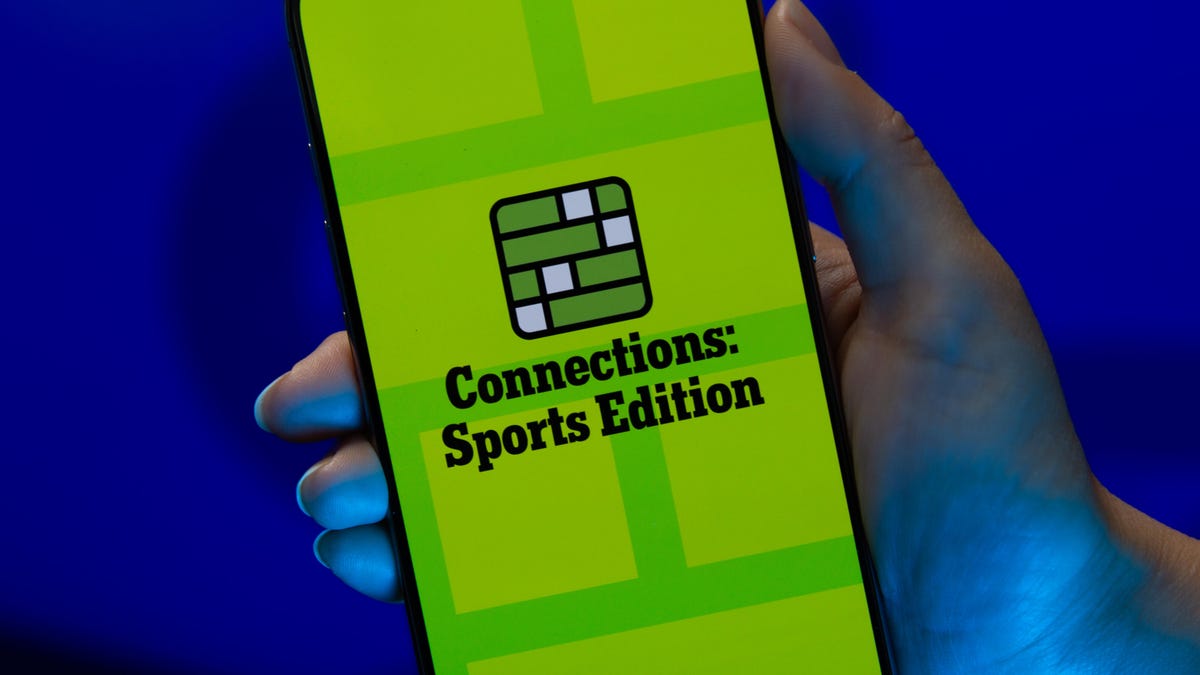Technologies
Motorola Razr 2025 vs. Razr Plus and Razr Ultra: All the Specs Compared
This year, Motorola added the $1,300 Ultra to its Razr lineup. Here’s how it stacks up against the two more affordable models.

Motorola has unveiled three new Razr foldable phones that range in price and features: the $700 Motorola Razr, the $1,000 Razr Plus and the $1,300 Razr Ultra, which are all available now. But what are the key differences between these modern flip phones?
The newest addition to the lineup, the Razr Ultra, levels up the capabilities you’ll find in the baseline Razr and the Razr Plus — and appears poised to give the $1,100 Samsung Galaxy Z Flip 6 a run for its money. The Razr Ultra packs 50-megapixel wide and ultrawide cameras, a 4,700-mAh battery and 68-watt charging. But read on to see how it compares to its less pricey Razr counterparts and if nabbing the top-of-the-line device is worth the extra money.
But first, here are some commonalities across the three phones. They all run Android 15, have a side fingerprint sensor, boast an IP48 rating for dust and water resistance and lack a headphone jack and expandable storage.
Each phone is equipped with Moto AI features that can be activated with a dedicated button, or by looking and speaking directly at the phone. Motorola has integrated services from Perplexity, Microsoft Copilot, Meta’s Llama and Google Gemini to handle tasks like transcriptions, brainstorming and serving up suggestions based on what’s on your screen.
One thing to note is how Motorola’s Android support comes up short compared to the competition. You’ll only get three years of major software upgrades and four years of security updates on the phones, compared to the seven years Samsung and Google offer on their phones.
Now, onto what separates the 2025 Motorola Razr, Razr Plus and Razr Ultra.
Razr 2025 vs. Razr Plus vs. Razr Ultra screen size(s)
The most noticeable difference when looking at the three phones is the nearly half-inch bezel on the baseline Razr’s cover screen, which shrinks down that display to 3.6 inches, versus the 4-inch cover displays on the Razr Plus and Razr Ultra. Another key difference is that the baseline Razr’s cover screen has a 90Hz variable refresh rate, while the two pricier phones go up to 165Hz. All three cover screens are pOLED displays.
Moving to the internal displays, the Razr has a 6.9-inch FHD+ AMOLED display with a 120Hz variable refresh rate, while the Razr Plus has a 6.9-inch FHD+ pOLED display with a 165Hz variable refresh rate. The Razr Ultra, meanwhile, has a 7-inch Super HD AMOLED display with a 165Hz variable refresh rate.
Razr 2025 vs. Razr Plus vs. Razr Ultra cameras
Camera capabilities could be a determining factor when choosing one of these three phones. The baseline Razr has a 50-megapixel wide and 13-megapixel ultrawide camera. The Razr Plus has a 50-megapixel wide and 50-megapixel telephoto camera. And the Razr Ultra packs a 50-megapixel wide and 50-megapixel ultrawide camera.
Flipping to the internal screens, you’ll get a 32-megapixel selfie camera on the baseline Razr and the Razr Plus, and a 50-megapixel one on the Razr Ultra. Megapixels aren’t everything for camera and photo quality, but these specs definitely make the Ultra sound like a triple threat. Stay tuned for CNET’s reviews to see how these cameras perform in the real world.
Razr 2025 vs. Razr Plus vs. Razr Ultra batteries
Interestingly, the baseline Razr has a 4,500 mAh battery, higher than the 4,000 mAh you’ll get on the pricier Razr Plus. But the Razr Ultra tops them all with a 4,700 mAh battery. We’ll be sure to incorporate our battery test and observations into upcoming reviews of the phones to better understand how they perform day to day.
The Razr supports 30-watt wired charging and 15-watt wireless charging. Meanwhile, the Razr Plus supports 45-watt wired charging and 15-watt wireless charging, as well as 5-watt reverse charging, which can be handy if you have another device to charge and essentially want to turn your phone into a power bank. The Razr Ultra tops them all with 68-watt wired charging, 30-watt wireless charging and 5-watt reverse charging.
Razr 2025 vs. Razr Plus vs. Razr Ultra processor and storage
The baseline Razr is powered by a MediaTek Dimensity 7400X chipset, while the Razr Plus has a Snapdragon 8s Gen 3 chipset and the Razr Ultra packs a Snapdragon 8 Elite processor.
You’ll get 8GB of RAM and 256GB of storage on the baseline Razr, 12GB of RAM and 256GB of storage on the Razr Plus and 16GB of RAM with either 512GB or 1TB of storage on the Razr UItra. That can make the upcharge on the priciest Razr worth your money, if you’re inclined to use your phone for gaming or want to take loads of pictures without worrying about running out of storage space.
Should you upgrade from an older Razr?
On paper, there aren’t any huge differences between this year’s Razr and Razr Plus and last year’s models. The newer phones share the same screen sizes, pixel densities, general dimensions and camera specs as their predecessors. This year, Motorola added some features like dust resistance and new AI capabilities, but it’s probably not worth upgrading if you can hang onto your 2024 device a bit longer.
If you have an older phone like the 2023 Razr and Razr Plus or earlier, you might be more enticed to upgrade to take advantage of faster charging, more powerful RAM and processors and, of course, new AI features. And especially with just three years of software updates, you might feel the clock ticking before it’s time for your next upgrade.
Check out the spec chart below for a side-by-side breakdown and comparison of the three phones.
Motorola Razr (2025) vs. Razr Plus (2025) vs. Razr Ultra (2025)
| Motorola Razr (2025) | Motorola Razr Plus (2025) | Motorola Razr Ultra (2025) | |
| Cover display size, tech, resolution, refresh rate | 3.6-inch pOLED; up to 90Hz variable refresh rate | 4-inch pOLED; 1272 x 1080 pixels; up to 165Hz variable refresh rate | 4-inch pOLED; up to 165Hz variable refresh rate |
| Internal display size, tech, resolution, refresh rate | 6.9-inch AMOLED; FHD+; up to 120Hz variable refresh rate | 6.9-inch pOLED; FHD+; 2640 x 1080 pixels; up to 165Hz variable refresh rate | 7-inch AMOLED; super HD; up to 165Hz variable refresh rate |
| Pixel density | Cover: 413 ppi; Internal: 413 ppi | Cover: 417 ppi; Internal: 413 ppi | Cover: 417 ppi; 464 ppi |
| Dimensions (inches) | Open: 2.91 x 6.74 x 0.29 inches Closed: 2.91 x 3.47 x 0.62 inches | Open: 2.91 x 6.75 x 0.28 inches Closed: 2.91 x 3.47 x 0.6 inches | Open: 2.91 x 6.75 x 0.28 inches Closed: 2.91 x 3.47 x 0.62 inches |
| Dimensions (millimeters) | Open: 73.99 x 171.30 x 7.25mm Closed: 73.99 x 88.08 x 15.85mm | Open: 73.99 x 171.42 x 7.09mm Closed: 73.99 x 88.09 x 15.32mm | Open: 73.99 x 171.48 x 7.19mm Closed: 73.99 x 88.12 x 15.69mm |
| Weight (grams, ounces) | 188g (6.63 oz) | 189g (6.67 oz) | 199g (7 oz) |
| Mobile software | Android 15 | Android 15 | Android 15 |
| Cameras | 50-megapixel (wide), 13-megapixel (ultrawide) | 50-megapixel (wide), 50-megapixel telephoto | 50-megapixel (wide), 50-megapixel (ultrawide) |
| Internal screen camera | 32-megapixel | 32-megapixel | 50-megapixel |
| Video capture | 4K | 4K | 4K |
| Processor | MediaTek Dimensity 7400X | Snapdragon 8s Gen 3 | Snapdragon 8 Elite |
| RAM/storage | 8GB + 256GB | 12GB + 256GB | 16GB + 512GB, 1TB |
| Expandable storage | None | None | None |
| Battery | 4,500 mAh | 4,000 mAh | 4,700m Ah |
| Fingerprint sensor | Side | Side | Side |
| Connector | USB-C | USB-C | USB-C |
| Headphone jack | None | None | None |
| Special features | IP48 rating, dual stereo speakers, 30-watt wired charging, 15-watt wireless charging, 1,700 nit peak brightness on cover display, 3,000 nit peak brightness on main display, 5G. | IP48 rating, Corning Gorilla Glass Victus on front, titanium-reinforced hinge, 2,400 peak brightness on cover display; 3,000 nit peak brightness on main display, 5G, Wi-Fi 6/6E, Wi-Fi 7, 45-watt wired charging, 15-watt wireless charging, 5-watt reverse charging. | IP48 rating, 68-watt wired charging, 30-watt wireless charging, 5-watt reverse charging, dual stereo speakers, Corning Gorilla Glass Ceramic cover dispaly, 3,000 nits peak brightness on cover display, 4,500 nits peak brightness on main display, 5G. |
| US price starts at | $700 | $1,000 | $1,300 |
Technologies
China Cracks Down: Fake Experts Banned From Social Media
China is going all-in with strict social media policies surrounding educational topics.

Misinformation is tough to decipher in this day and age of social media. Over in China, the internet regulator has announced that it is further enforcing laws prohibiting social-media influencers from sharing advice on finance, medicine, law and education on social media unless they have the professional credentials to back up their content.
China’s social media platforms, such as Bilibili, Doyin (China’s TikTok) and Weibo, must follow the new regulations set down by the Cyberspace Administration of China on Saturday.
Creators will have to share studies to support their information and reveal whether they used AI to generate any of their content.
Don’t miss any of our unbiased tech content and lab-based reviews. Add CNET as a preferred Google source.
CAC is also banning advertising for supplements and medical services, and similar posts that pose as educational content to sell a product. Prior to this regulation, China declared a two-month campaign to eliminate pessimistic, hostile or violent content.
China has been criticized for its attempt to control online content and public opinion. But it wouldn’t be the first country to enforce laws surrounding social media policies.
Spain implemented its own influencer law in 2024, which required influencers on YouTube, Instagram and TikTok earning over 300,000 euro to be transparent about partnerships with brands and sponsorships. Influencers must also adhere to copyright laws and restrictions on targeting of minors with content related to tobacco, alcohol and medications.
A study conducted by the United Nations Educational, Scientific and Cultural Organization found that only 36.9% of influencers verify that the content that they share is true before posting.
That’s especially troubling since a 2025 Pew Research Center report found that one in five young American adults receives their news through TikTok.
A representative for UNESCO didn’t immediately respond to a request for comment.
Technologies
Today’s NYT Connections: Sports Edition Hints and Answers for Oct. 30, #402
Here are hints and the answers for the NYT Connections: Sports Edition puzzle for Oct. 30, No. 402.

Looking for the most recent regular Connections answers? Click here for today’s Connections hints, as well as our daily answers and hints for The New York Times Mini Crossword, Wordle and Strands puzzles.
Today’s Connections: Sports Edition is a tough one. I guess I don’t know my pitches very well. If you’re struggling but still want to solve it, read on for hints and the answers.
Connections: Sports Edition is published by The Athletic, the subscription-based sports journalism site owned by The Times. It doesn’t show up in the NYT Games app but appears in The Athletic’s own app. Or you can play it for free online.
Read more: NYT Connections: Sports Edition Puzzle Comes Out of Beta
Hints for today’s Connections: Sports Edition groups
Here are four hints for the groupings in today’s Connections: Sports Edition puzzle, ranked from the easiest yellow group to the tough (and sometimes bizarre) purple group.
Yellow group hint: Join our group.
Green group hint: Get away from me!
Blue group hint: Throw it over the plate.
Purple group hint: Like Nicholas.
Answers for today’s Connections: Sports Edition groups
Yellow group: Ways to add someone to a team.
Green group: Lose a would-be tackler.
Blue group: Softball pitches, with -ball.
Purple group: Nick ____.
Read more: Wordle Cheat Sheet: Here Are the Most Popular Letters Used in English Words
What are today’s Connections: Sports Edition answers?
The yellow words in today’s Connections
The theme is ways to add someone to a team. The four answers are draft, free agency, trade and waivers.
The green words in today’s Connections
The theme is lose a would-be tackler. The four answers are break, shake, shed and slip.
The blue words in today’s Connections
The theme is softball pitches, with -ball. The four answers are curve, drop, fast and rise.
The purple words in today’s Connections
The theme is Nick ____. The four answers are Chubb, Mangold, Nurse and Sirianni.
Technologies
How to Redeem Every Pokemon Legends: Z-A Mystery Gift Code and Reward
Prepare for your city-spanning Pokemon adventure with some extra goodies. These free mystery gift codes and rewards are available for you to grab today.

After 12 years, it’s finally time for Pokemon players to head back to the Kalos region in Pokemon Legends: Z-A, the newest game in the popular monster-catching franchise. If you’ve missed the worldwide capital of Mega Pokemon, fairy-type Pokemon and a whole bunch of baked bread, now’s the time to jump back into the world of pocket monsters.
The Switch 2’s first Pokemon game seems a bit scarier this time around. Though the beautiful Lumiose City projects safety and security, recent unexplained rampages from wild Mega Pokemon threaten the peace.
Don’t miss any of our unbiased tech content and lab-based reviews. Add CNET as a preferred Google source.
Between unearthing the cause of this phenomenon and taking down competitors in the Z-A Royale Pokemon battle ladder, there’s a lot of work to do in the Kalos region. You’ll need special partners to get the job done — and there are some special Mystery Gifts that have just the powerful pals you’re looking for.
Even though Pokemon Legends: Z-A is still a fairly new game, there are already three Mystery Gift codes you can redeem right now. These will unlock a rare Pokemon and tons of items that will help you prepare for competitive mode, which is especially important if you want to unlock limited-time Mega Stones that are walled behind ranked player-versus-player battling.
All active Mystery Gifts for Pokemon Legends: Z-A
While some Pokemon Legends: Z-A promo codes are uniquely tied to Nintendo purchases, we’ve gathered every free code and redemption requirement in one place for you here.
Below is a chart that contains every active Mystery Gift code for Pokemon Legends: Z-A, what it unlocks and its expiration date:
Active Pokemon Legends: Z-A Mystery Gifts
| Reward | Code or alternative redemption requirements | Expiration date |
|---|---|---|
| Ralts holding Gardevoirite | No associated code. Select «Get via internet» in the Mystery Gift menu. | Feb. 28, 2026 |
| 100x Poke Balls | Every code is unique. You can unlock the code for this Mystery Gift by purchasing the digital version of Pokemon Legends: Z-A. The code will be sent to the email associated with your Nintendo account. | March 10, 2026 |
| 3x Fast Balls, 3x Lure Balls, 3x Heavy Balls, 3x Level Balls | Every code is unique. You can unlock the code for this Mystery Gift by purchasing the Mega Dimension DLC. The code will be sent to the email associated with your Nintendo account. | March 10, 2026 |
How to redeem Mystery Gifts in Pokemon Legends: Z-A
If you have Mystery Gift codes to redeem in Pokemon Legends: Z-A, you’re likely eager to grab those rewards as soon as possible. But you need to do a little bit of legwork before unlocking the code redemption menu.
To unlock Mystery Gift functionality, you need to progress through the main story until you reach the third main mission, called A New Life in Lumiose City.
During this mission, you’ll meet Mable, the acting director of the Pokemon Research Lab in Kalos. Once you unlock Mable’s research, a new «Link Play» tab becomes accessible in the pause menu.
Within the Link Play tab, you can redeem Mystery Gift codes — as long as you’re connected to the internet.
What are Mystery Gifts?
Mystery Gifts are a long-running way to reward Pokemon players with extra goodies. The official gift distributions have existed since Pokemon Gold and Silver was released in 1999.
Back then, players needed to have special hardware — like a Game Boy Advance Wireless Adaptor — in order to acquire Mystery Gifts. Newer games make the process much easier, since you need only connect to Wi-Fi in order to access gifts for the Pokemon games on the Nintendo Switch.
While some Mystery Gifts are accessible for free, others are unlocked by promo codes that you’ll have to hunt down through specific means. Mystery Gifts are good ways to gather precious items, add mythical Pokemon to the Pokedex and capture rare shiny Pokemon.
-

 Technologies3 года ago
Technologies3 года agoTech Companies Need to Be Held Accountable for Security, Experts Say
-

 Technologies3 года ago
Technologies3 года agoBest Handheld Game Console in 2023
-

 Technologies3 года ago
Technologies3 года agoTighten Up Your VR Game With the Best Head Straps for Quest 2
-

 Technologies4 года ago
Technologies4 года agoVerum, Wickr and Threema: next generation secured messengers
-

 Technologies4 года ago
Technologies4 года agoBlack Friday 2021: The best deals on TVs, headphones, kitchenware, and more
-

 Technologies4 года ago
Technologies4 года agoGoogle to require vaccinations as Silicon Valley rethinks return-to-office policies
-

 Technologies4 года ago
Technologies4 года agoOlivia Harlan Dekker for Verum Messenger
-

 Technologies4 года ago
Technologies4 года agoiPhone 13 event: How to watch Apple’s big announcement tomorrow
